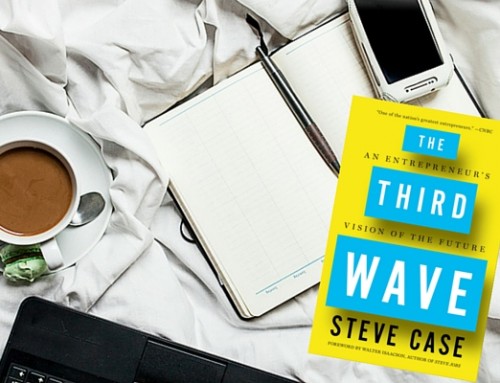
- Put likable, competent and passionate people on the front line. I prefer to interact with employees who smile, know what they’re talking about, and love what they sell. However, companies often put the lowest-paid, least-experienced employees behind the counter or at the front desk and hope for the best. This doesn’t make sense. Ask yourself this question: Is the first impression of my business a good one? Because if it’s a bad one, it may also be the last one.
- Show me that you trust me. If you don’t trust me, I’m not going to trust you. Look at the small businesses that became huge: Zappos tells me that it trusts me because it pays shipping in both directions. Nordstrom takes my word for it if I say merchandise was defective. Amazon lets me return a Kindle book for seven days—I can read most books in seven days! If you trust me, I’ll trust you, and we can build a relationship.
- Remove barriers to entry. Make it easy to get started with your product or service. Don’t ask people to fill out 10 fields of personal information to open an account. Don’t throw up a CAPTCHA system that requires fluency in Sanskrit. Don’t require an appointment for a consultation. Instead, create a slippery slope that enables people to start doing business with you quickly.
- Make it easy to give you money. Once people decide to adopt your product or service, make it easy for them to give you their money, attention or eyeballs. This requires accepting multiple methods of payment, adopting easy-to-use shopping carts, and reasonable shipping and handling charges. If there’s anything worse than a company that tries to get my money with a crappy product, it’s a company that makes it hard to give it my money for a great one.
- Go deep in a segment. The Stanley Market in Hong Kong contains dozens of shops, and many of them sell a range of t-shirts, souvenirs, toys, luggage, electronics and cameras. You get the sense that these stores sell anything to make a buck. The only place that I bought something there was Tam’s Art Gallery because it sells only “chops” (a stamp or seal made from stone). Since there’s only one thing to buy at Tam’s, it’s easier to believe that this store really understands its business. My advice is that you focus on one thing whether it’s selling t-shirts (Threadless), toys (CheekyMonkey), luggage (Edwards Luggage), electronics (Fry’s), cameras (Keeble & Shuchat) or yogurt (Miyo Yogurt).
- Sell something that’s DICEE. This acronym defines the five qualities of great products and services: deep, intelligent, complete, empowering,and elegant. A DICEE product or service is a full-featured one (deep) that shows you understand my needs (intelligent), comes with support (complete), makes me better (empowering), and is easy to use (elegant). As you create your offerings, ask yourself if they are deep, intelligent, complete, empowering and elegant.
- Enable hands-on trial. Assume that your customers are smart and let them decide for themselves instead of bludgeoning them into a sale. Give them the ability to try your product or service with hands-on areas or demo versions. This concept works whether you’re buying a car, sampling a dessert, trying a camera, or buying a power tool. Once you’ve got me try something, half the battle is over, and if you tell me that I have to buy something to try it, you’ve lost me.
- Communicate with salient points. How many people truly understand what a gigabyte of storage means? A much better way to communicate the capability and capacity of your products and services is with salient points. For example, the number of songs a device can store is more illuminating than the number of gigabytes of storage capacity. You may find this harder to believe, but telling me how much weight I’ll gain by eating your food would make me eat at your restaurant more often because this salient point shows that you care about my health.
- Deliver bad news early. Shiitake happens: products have problems, deliveries are delayed, and employees get sick. Many businesses try to minimize the effect of bad news, but when the inevitable issue arise, be proactive and tell them about the problem before they discover the hiccup for themselves. And to get on top of your game, let them know how you’ll solve the problem at the same time that you’re letting them know it exists.
- Consider all the influencers. There is a difference between the person who pays for something and the person who makes the decision to buy something. Many companies assume it’s the same person, but that’s not necessarily the case. Key influencers can include a spouse, sibling, colleague, parent, grandparent or child. Who is the true head of a household isn’t so clear these days, so appeal to all the influencers. In my case, it’s my daughter, by the way.
The single most powerful way to enchant me is a “yes” attitude, and this attitude encompasses all 10 points. It means that you believe that the customer is right and reasonable until proven wrong and unreasonable. Custom order? No problem. Early delivery? No problem. Return for full credit? No problem.
The math might show that if you did this for everyone, you’d go broke, but not everyone will ask for such treatment. In fact, very few will, and those that do will become your greatest evangelists, so they’re worth the exception.
If you’re a small business owner, may this Saturday be the best Saturday of the year for you. If you’re a consumer, go out and spend a few bucks at a local small business for goodness sake.
These techniques and much much more are in my upcoming book, Enchantment: The Art of Changing Hearts, Minds, and Actions.


Leave a Reply